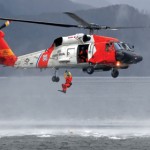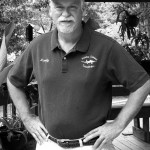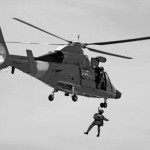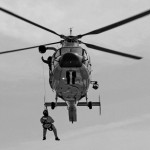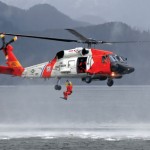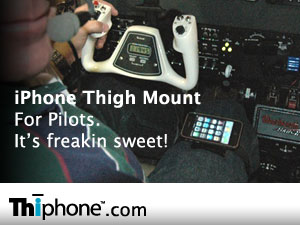AFTER THE PLUNGE
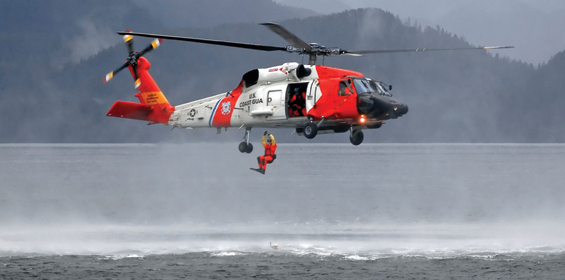
The recent ditching of a U.S. Air jet into the Hudson river highlighted something most pilots shudder to think about: how to survive a water ditching. Recently, DOWNWIND editor-in-chief Richard Edelson had a chance to have a candid discussion with retired U.S. Coast Guard Senior Chief Petty Officer Randy Boone. Boone spent 23 years as an Aviation Survivalman in the Coast Guard and founded Aviation Survival Technologies, Inc. (AST) when he retired in 1996. Randy has been the water survival “guru” for the fabled “Cayman Caravan” fly-ins for the past sixteen years, conducting seminars for well over 1,000 general aviation pilots who were about to depart Key West for a flight over Cuba to the Cayman Islands. With over 4000 hours as a U.S. Coast Guard Aircrew member aboard C-130s and HU-25A aircraft, and years of first-hand experience conducting Search and Rescue operations for persons in the water, Randy’s general aviation experience and Coast Guard background make him uniquely qualified as a bona fide expert in light aircraft over-water operations.
How does the Coast Guard locate a target?
When a mission is activated, the Coast Guard will determine a Probability Of Detection (POD). Several factors will be examined such as weather (visibility, wind direction), sea state, size of search area, size of target, and type of search resources, i.e. small boat, cutters, or aircraft types. Another factor would be whether we know where to search. For instance, do we have a legitimate last-known position, or is it an over-due case in which the target could be literally anywhere in the Gulf of Mexico and just hasn’t arrived as expected yet. All of these factors are accumulated and processed into a computer-assisted search planning system (CASP). From this model, the Coast Guard gathered all the best available known information they have on the individual(s) they are looking for and decide what type of search will be performed.
How long will the Coast Guard continue searching for a target?
The Coast Guard uses a Probability of Survival (POS) model. Factors used for probability of survival include individual physical and mental (strong will to survive) conditions, sea state, water temperature, and any survival equipment carried. This is the unfortunate part of many missions – at some point, those in charge of the mission have to make a determination on when to call off the search. If the proximity of detection score is low and conditions are such that the probability of survival is not encouraging, the Coast Guard will eventually have to notify the family of the search coming to an end. Normally they
will continue to search beyond the “call” time by a day or so, then the family will be notified that although the search has been called off, they will continue to monitor the area with patrols.
How can an individual increase the chances of being found?
Let me explain how to raise your probability of detection and survivability score. Two things are absolutely critical: First, you need to carry survival equipment aboard your aircraft. Secondly, you need to let everyone know you have this equipment on board.
Who should a pilot inform about the survival equipment?
First, inform your family members. When a search begins, it is usually because a spouse has called the Coast Guard and reported you missing. ‘He said he would be back this afternoon and it is ten o’clock at night.’ Or perhaps a Rescue Command Center (RCC) has received a distress signal from an emergency position indicating radio beacon (EPIRB or ELT) or personal locater beacon (PLB). In most cases, the registration process of these beacons will include your home phone number. Once a distress signal is received, the first thing the RCC will do is call the number on file to check the validity of the distress. By leaving a detailed list of all your equipment carried on your aircraft, the spouse can give the RCC very useful information to help with the search. Another bit of useful information would be a basic float plan or flight plan. Make a copy of your float/flight plan and give it to your spouse. The information will be posted with the airport, but remember, the call to or from the house will be the first point of contact, and by giving this information up front can save several valuable hours. Remember, survival is not about how long you can stay lost; it’s about how soon you can be found.
Second, list your carried survival equipment in the remarks section of your flight plan, especially if you are flying long legs over water. Again, valuable information!
Lastly, list your survival equipment in the remarks section of your EPIRB or PLB registration. Once your distress signal is received, it will also show RCC what equipment you have on board. With this information, the searchers now have a better perspective of what they are searching for, and this information increases both your POD and your POS in the eyes of the folks looking for you. In other words, the primary target will be an aircraft, the secondary one will be a life raft with signaling devices, the tertiary one will be a person in an orange lifevest with water-activated lighting, and finally a person in the water with no floatation or signals. As you move down the list of targets, your POD/POS scores go lower.
How do your company’s products aid in a person surviving a crash over water?
After retirement from the U.S. Coast Guard, I designed a means to increase the scores of the person with a life vest and the person without one. The AST Overwater Pouch is a fanny pack that allows you to wear it while flying an aircraft. I know that no matter how much I stress the importance of wearing a life vest while flying, people will still choose to leave it off. In fact, I witnessed as much in the many years I was a survival instructor for the Cayman Caravan. I have pretty much come to the conclusion that it all comes down to ego;. some believe that if they’re seen wearing a life vest in the cockpit, it will display inferiority or lack of confidence. To us, it is one of those things in aviation that is better to have and not need than need and not have. Our AST Overwater Pouch will not provide floatation, but if nothing else, it will increase your target size tremendously by the signaling equipment contained within.”
Does wearing a life vest mean I will be found?
The life vest is third on the scale of POD, but even the bright orange bladder is actually very difficult to spot from the air, especially at night, in weather or heavy seas. Placement of signaling equipment on your life vest is paramount in being spotted. The AST Signal Kits are small (5”x5”), attach to a life vest or your belt, and boast everything from a SOLAS whistle to a 406MHz PLB with GPS. Simply placing this kind of survival equipment in your aircraft and listing it increases your chances of survival by a factor of three. It will significantly increase your chances of survival; it will give your searchers multiple search target factors (thus prolonging the search), and will give your loved ones a significantly better outlook for your safe return. DOWN WIND
Pilots interested learning more about AST’s full suite of survival products including complete kits, life rafts and electronic gear should visit the website at www.astoverwater.com, contact Randy at (251) 510-5225 or email astboone@mchsi.com


